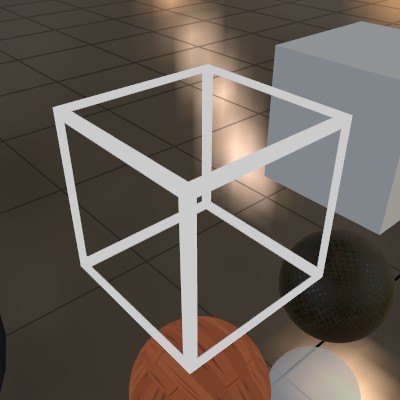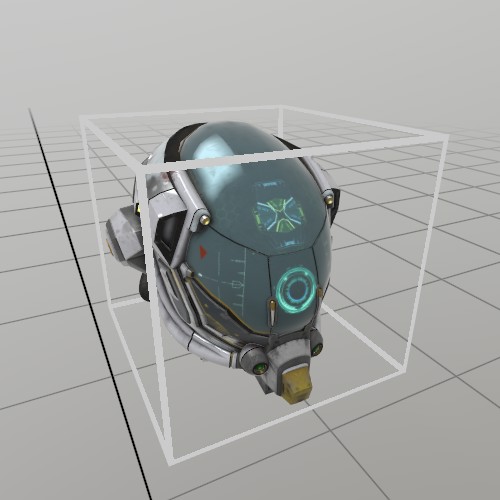Material.UIBox
static Material UIBox{ get }
Description
A material for indicating interaction volumes! It renders a border around the edges of the UV coordinates that will ‘grow’ on proximity to the user’s finger. It will discard pixels outside of that border, but will also show the finger shadow. This is meant to be an opaque material, so it works well for depth LSR.
This material works best on cube-like meshes where each face has UV coordinates from 0-1.
Shader Parameters:
color - color
border_size - meters
border_size_grow - meters
border_affect_radius - meters
Examples
The UI Box material has 3 parameters to control how the box wires are rendered. The initial size in meters is ‘border_size’, and can grow by ‘border_size_grow’ meters based on distance to the user’s hand. That distance can be configured via the ‘border_affect_radius’ property of the shader, which is also in meters.
matUIBox = Material.UIBox.Copy();
matUIBox["border_size"] = 0.005f;
matUIBox["border_size_grow"] = 0.01f;
matUIBox["border_affect_radius"] = 0.2f;

An Interactive Model

If you want to grab a Model and move it around, then you can use a
UI.Handle to do it! Here’s an example of loading a GLTF from file,
and using its information to create a Handle and a UI ‘cage’ box that
indicates an interactive element.
Model model = Model.FromFile("DamagedHelmet.gltf");
Pose handlePose = new Pose(0,0,0, Quat.Identity);
float scale = .15f;
public void StepHandle() {
UI.HandleBegin("Model Handle", ref handlePose, model.Bounds*scale);
model.Draw(Matrix.S(scale));
Mesh.Cube.Draw(Material.UIBox, Matrix.TS(model.Bounds.center*scale, model.Bounds.dimensions*scale));
UI.HandleEnd();
}
Found an issue with these docs, or have some additional questions? Create an Issue on Github!
